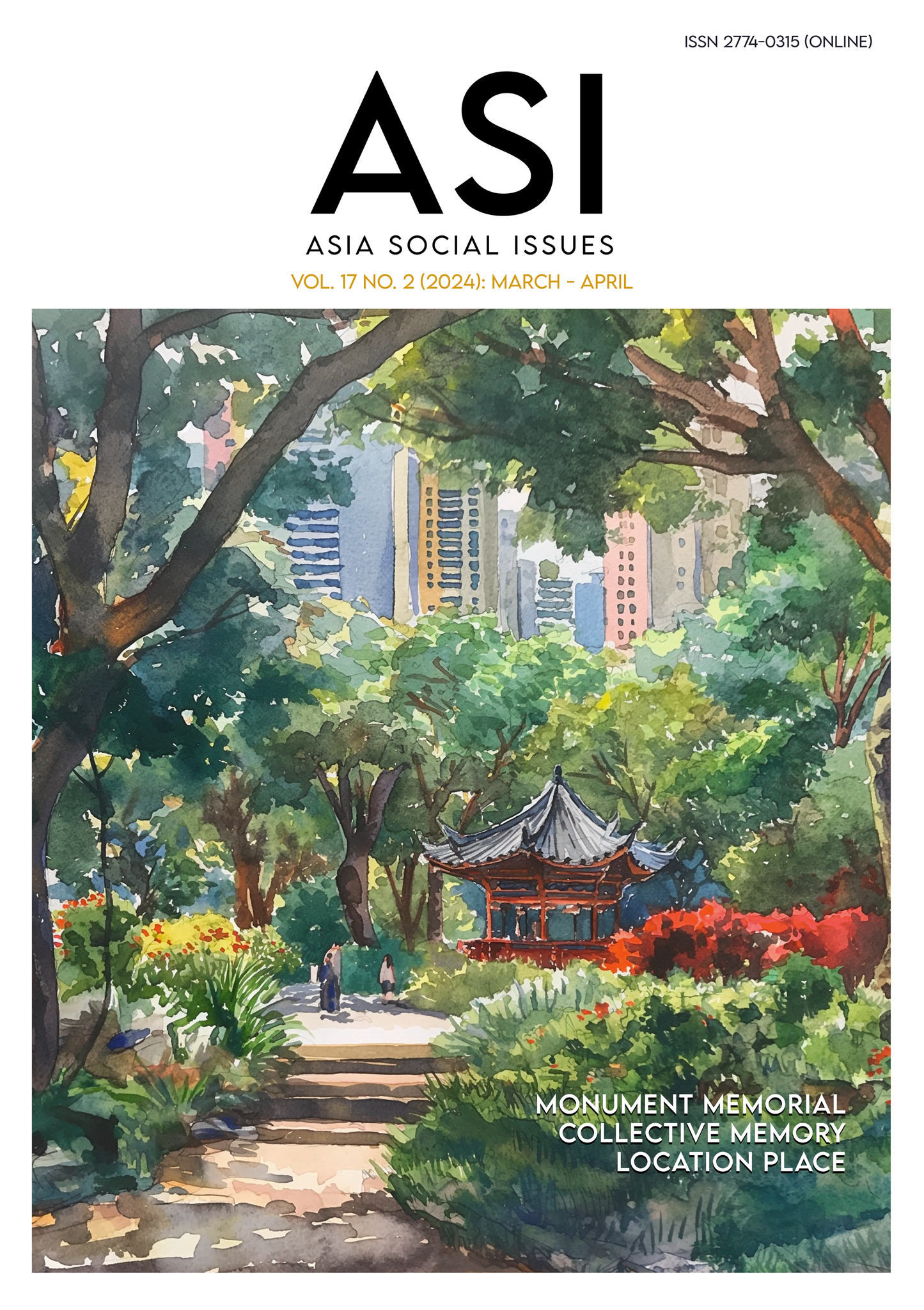Meaning Representations of “Trans,” “Transgender,”“Transsexual” and “Tranny”: A Corpus-Based Analysis in Digital News and Magazines
Main Article Content
Abstract
This present study aims to examine the English references in digital media that are commonly used to refer to the group of non-binary people and to explore the aspects of references used to portray their meanings towards LGBT people. The first-100 concordance lines of NOW Corpus were used as a primary data source. In order to analyze the data, two groups of the nodes: favorable terms (transgender and trans) and unfavorable terms (transsexual and tranny), were searched and analyzed using descriptive percentage, thematic content analysis, and corpus-driven discourse analysis. The findings revealed that the highest frequencies of references commonly used in digital news and magazines to refer to LGBT individuals are transgender and trans, respectively. Besides, two sub-themes were found in the concordance lines in terms of positive meanings: raising equality, showing advocacy and performance, and politics, and policy and sarcastic or negative meanings: showing bias or discrimination, subgroup, abandonment and insecurity, difficulties and oppressions, and derogatory and sexual desire. Some unfavorable terms are still underused in media, but they could reveal some positive meanings in terms of politics and policy. The implementations of the study are that the meanings of some LGBT terms are dynamic and that when used in media, content writers need to be aware of different meanings and contexts of the words.
Article Details

This work is licensed under a Creative Commons Attribution-NonCommercial-NoDerivatives 4.0 International License.
Copyright: CC BY-NC-ND 4.0
References
Baker, P. (2014). Using corpora to analyze gender. New York, the United States of America: Bloomsbury.
Baker, P., Costas, G., Majid, K., Michał, K., McEnery, T., & Ruth, W. (2008). A useful methodological synergy? Combining Critical Discourse Analysis and Corpus Linguistics to examine discourses of refugees and asylum seekers in the UK press. Discourse & Society 19(3), 273–306.
Boontam, P., & Phoocharoensil, S. (2018). Effectiveness of English preposition learning through data-driven learning. 3L: Language, Linguistics, Literature, 24(3), 125-141.
Butler, J. (1990). Gender trouble: Femininism and the subversion of identity. London, the United Kingdom: Routledge.
Davies, M. (2011). The Corpus of Contemporary American English as the first reliable monitor corpus of English. Literary and Linguistic Computing 25(1), 447-65.
Davies, M. (2017). The new 4.3 billion word NOW corpus, with 4-5 million words of data added every day (pp. 1-2). In Proceedings of the Corpus Linguistics 2017 Conference. Birmingham, United Kingdom: University of Birmingham
Dijk, V., & Adrianus, T. (2008). Discourse and power. New York, the United States of America: Palgrave Macmillan.
El Refaie, E. (2001). Metaphors we discriminate by: Naturalized themes in Austrian newspaper articles about asylum seekers.’ Review of Journal of Sociolinguistics, 5, 352-371.
Evison, J. (2010). What are the basics of analysing a corpus? (pp. 122-135). In O’Keeffe, A., & McCarthy, M. (Eds.). The Routledge handbook of corpus linguistics. London, the United Kingdom: Routledge.
Foucault, M. (1980). Power/knowledge. Selected interviews and other writings 1972-1977. New York, the United States of America: Pantheon Books.
Hussein, F. R., & Sawalha. M. (2016). A corpus-based study of similes in British and American English.’ Arab World English Journal, 7(2), 49-60.
Klomkaew, S., & Kanokpermpoon, M. (2022). Ze is better than Hir? A corpus-based analysis in digital news and magazines. The New English Teacher, 16(1), 125-152.
Koteyko, N. (2006). Corpus linguistics and the study of meaning in discourse. The Linguistics Journal, 1(2), 132-157.
Krennmayr, T. (2015). What Corpus Linguistics can tell us about metaphor use in newspaper texts’. Journalism Studies, 16(4), 530-546.
LGBTQIA Resource Center. (2020). LGBTQIA resource center glossary. Retrieved fromhttps://lgbtqia.ucdavis.edu/educated/glossary
Lindquist, H. (2009). Corpus linguistics and the description of English. Edinburgh, the United Kingdom: Edinburgh University Press.
McEnery, T., & Wilson, A. (1996). Corpus Linguistics. Edinburgh, the United Kingdom: Edinburgh University Press.
Meyer, I. H. (2003). Prejudice, social stress, and mental health in lesbian, gay, and bisexual populations: Conceptual issues and research evidence. Psychological Bulletin, 129, 674-697.
O’Keeffe, A., McCarthy, M., & Carter, R. (2007). From corpus to classroom: Language use and language teaching. Cambridge, the United Kingdom: Cambridge University Press.
Siebler, K. (2012). Transgender transitions: Sex/gender binaries in the digital age. Journal of Gay & Lesbian Mental Health, 16(1), 74-99.
Sinclair, J. (1990). Collins COBUILD: English grammar. London, The United Kingdom: Collins.
Spargo, T. (1999). Foucault and queer theory. Duxford, Cambridge, the United Kingdom: Icon Books.
Teubert, W. (2005). My version of corpus linguistics. International Journal of Corpus Linguistics 10(1), 1-13.
Törmä, K. (2018). Collocates of trans, transgender(s) and transsexual(s) in British newspapers: A corpus-assisted critical discourse analysis (Master’s thesis). Sweden: Mid Sweden University.
Trans Media Watch (2015). Media style guide. Retrieved from https://pdf4pro.com/amp/view/media-style-guide-trans-media-watch-44cded.html.


